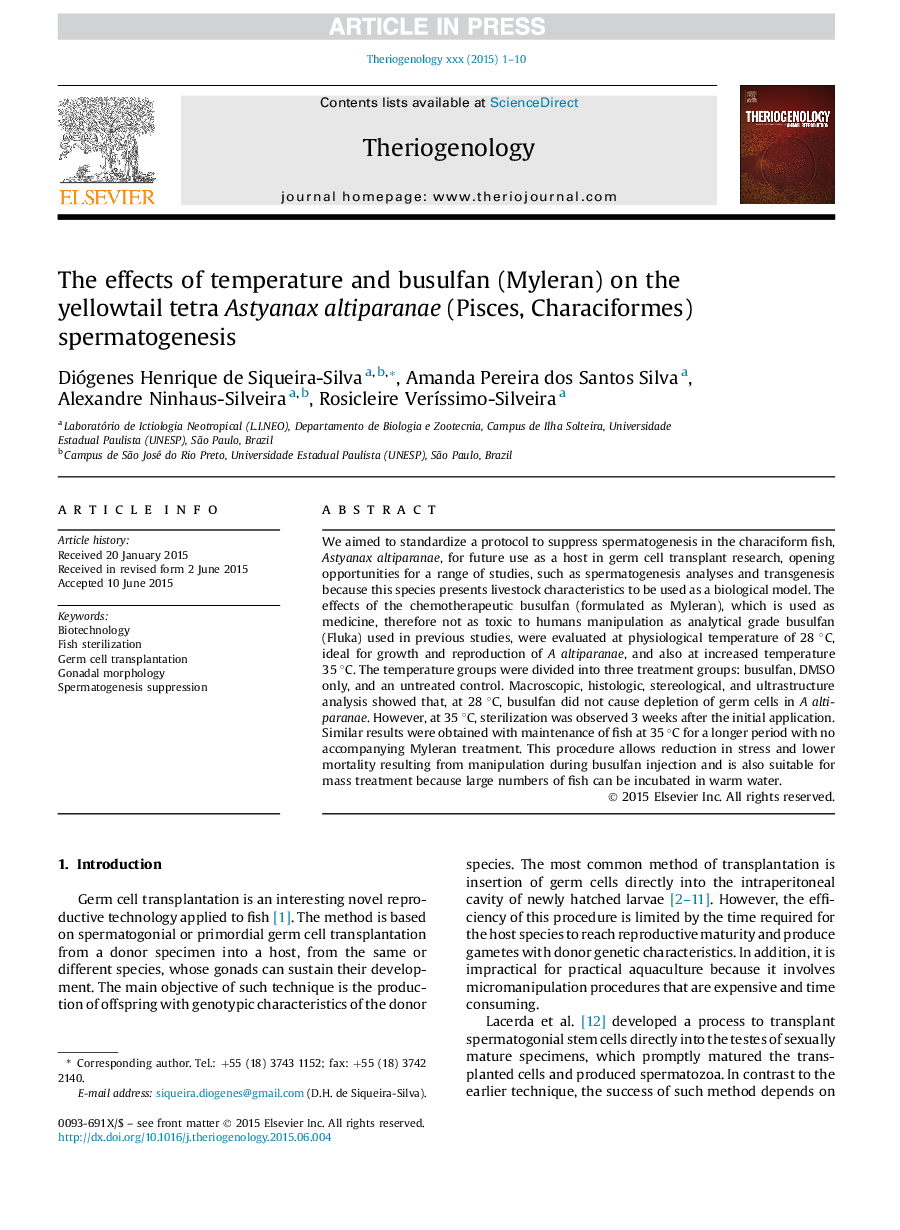| Article ID | Journal | Published Year | Pages | File Type |
|---|---|---|---|---|
| 10891671 | Theriogenology | 2015 | 10 Pages |
Abstract
We aimed to standardize a protocol to suppress spermatogenesis in the characiform fish, Astyanax altiparanae, for future use as a host in germ cell transplant research, opening opportunities for a range of studies, such as spermatogenesis analyses and transgenesis because this species presents livestock characteristics to be used as a biological model. The effects of the chemotherapeutic busulfan (formulated as Myleran), which is used as medicine, therefore not as toxic to humans manipulation as analytical grade busulfan (Fluka) used in previous studies, were evaluated at physiological temperature of 28 °C, ideal for growth and reproduction of A altiparanae, and also at increased temperature 35 °C. The temperature groups were divided into three treatment groups: busulfan, DMSO only, and an untreated control. Macroscopic, histologic, stereological, and ultrastructure analysis showed that, at 28 °C, busulfan did not cause depletion of germ cells in A altiparanae. However, at 35 °C, sterilization was observed 3 weeks after the initial application. Similar results were obtained with maintenance of fish at 35 °C for a longer period with no accompanying Myleran treatment. This procedure allows reduction in stress and lower mortality resulting from manipulation during busulfan injection and is also suitable for mass treatment because large numbers of fish can be incubated in warm water.
Related Topics
Life Sciences
Agricultural and Biological Sciences
Animal Science and Zoology
Authors
Diógenes Henrique de Siqueira-Silva, Amanda Pereira dos Santos Silva, Alexandre Ninhaus-Silveira, Rosicleire VerÃssimo-Silveira,
